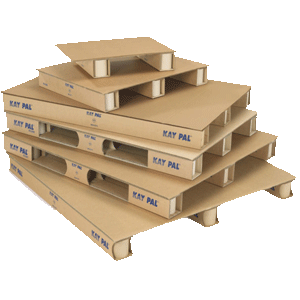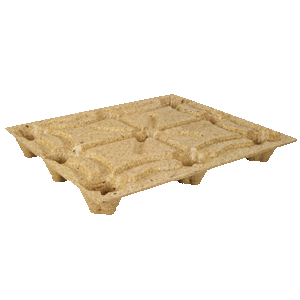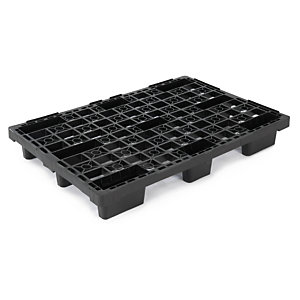There are a multitude of different pallets. There are different sizes, different materials – and you need to consider carrying capacity, application and driveways. Read on to find the answers to your questions.
Pallet types:
Euro pallets:
Europallets are a standardized pallet and are marked with the EPAL quality stamp (European Pallet Association) on the left corner block. This quality mark ensures that the pallets can be used nationally and internationally as exchange pallets. Thanks to their fixed dimensions of 1200 × 800 × 144 mm (length × width × height), they are suitable for all common forklift trucks and pallet trucks. Because the Euro pallet is a so-called four-way pallet, it can be picked up and transported from all four sides.
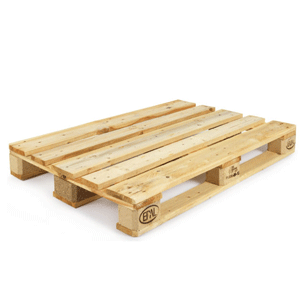
Wooden pallets:
Wooden pallets are as the word describes made of wood and are therefore 100% recyclable.They are cheap to purchase and very sturdy. However, they are not stackable/ nestable like corrugated or plastic pallets. To be approved for worldwide export they must also comply with the IPPC/ISPM 15 standard.
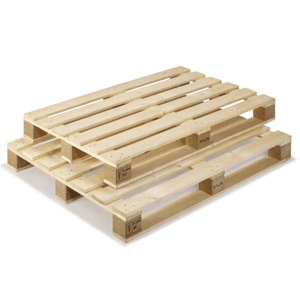
Corrugated pallets:
Corrugated pallets are easy and safe to handle due to the lack of splinters or sharp nails and can be exported to all countries without further processing. As the pallets are delivered stacked inside each other, they are particularly space-saving during delivery and storage. They are also ideal for presenting products directly at the POS.
Inca pallets:
INKA pallets are made from waste wood or wood chips in a resource-saving way. Due to their low weight and robustness, they are not only suitable for loading containers on ships, but also especially for air freight – because they weigh about half as much as a solid wooden pallet.
This type of pallet is practical during transport, and also for on-site storage: thanks to its stackability, empty pallets can be stacked inside each other to save space.
Another advantage: the Inka pallets are suitable for international export as they comply with the ISPM15 standard, which ensures that no wood-dwelling pests are introduced into other countries – thereby protecting the home forests.
Plastic Pallets:
Plastic pallets are very easy to stack and therefore save space, compared to non-stackable pallets up to 73% can be saved in storage height. They are of course also suitable for export as the material means that no parasite treatment is needed.In addition, thanks to the plastic, they are particularly safe and clean to handle, as they can withstand both steam cleaning and temperatures from -20°C to +60°C. Furthermore, plastic pallets are resistant to acids, fats and solvents.
Unlike wooden pallets, nails and splinters play no role here. The RAJA range is made from 100% recycled plastic and can be reused again and again – reducing plastic pallet consumption of raw materials.
Two-way and four-way pallets
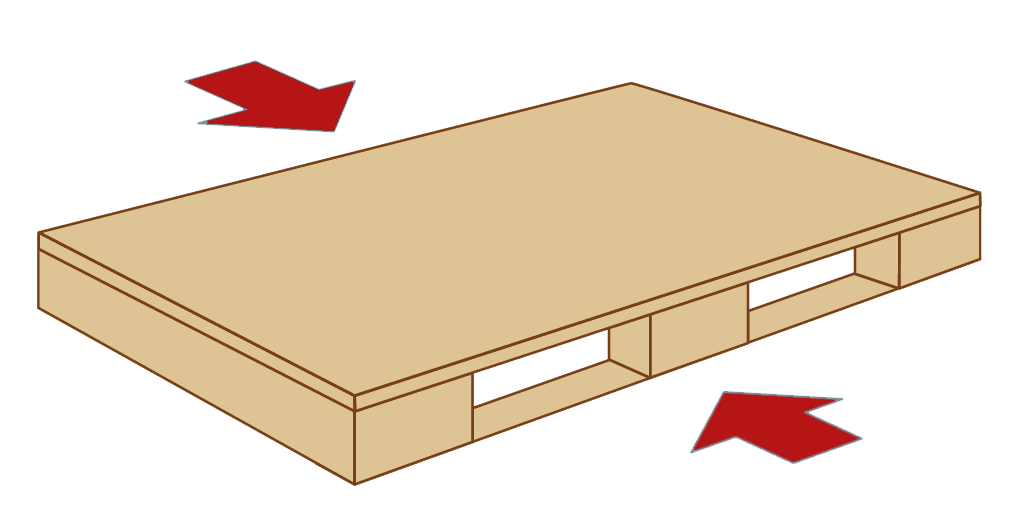
Two-way pallets can only be picked up by forklifts or pallet lifters from two sides. As a result, there is less flexibility, but they are much more stable due to the continuous square timber.
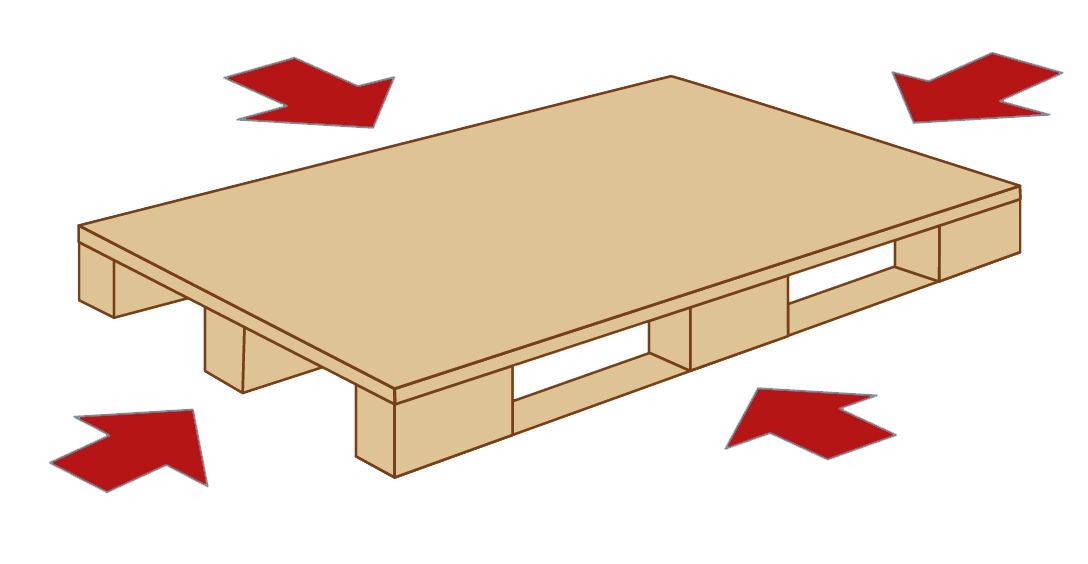
Four-way pallets can be accessed from all 4 sides and are very flexible. They are therefore particularly suitable for high-bay warehouses. The classic 4-way pallet is the Euro pallet.
Different types of load:
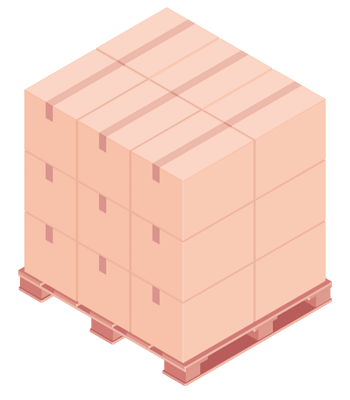
Static load
The static load is the maximum load on the pallet when it is stationary on the floor. For example, if a pallet has a static load of 4,000 kg, it can carry a load of 4,000 kg. For example, 1,000 kg is loaded on the bottom pallet which is on the floor and then 3 more can be stacked, each weighing 1,000 kg.
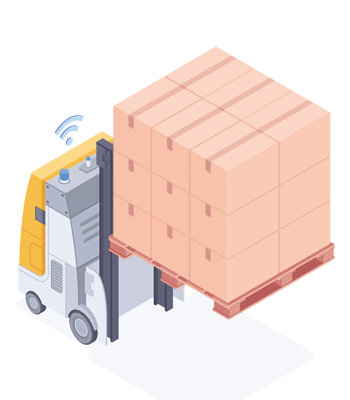
Dynamic load
The dynamic load capacity is the maximum load that a pallet can carry when transported by forklift or pallet jack. It is usually significantly lower than the static load. For example, a Euro pallet has a static load capacity of 4,000 kg, whereas the dynamic load capacity is only 1,500 kg.
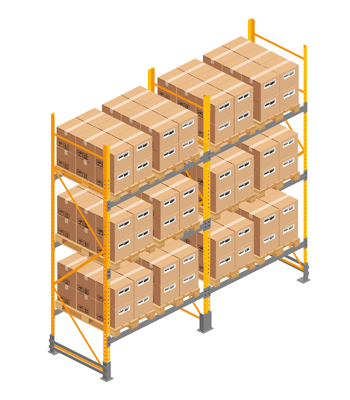
Shelf load
Sometimes the shelf load is also indicated. This means the maximum load on a pallet when it is standing on the shelf ( with two support points). The assumption is an even distribution of the pallet load. The tests are also performed at a room temperature of +20°C. The load capacity differs at other temperatures.
Pallet dimensions:
Within the pallet family there are two sizes which are the most common worldwide. On the one hand we have the US size of 1200 x 1000 mm. These pallets are mainly used in the USA, Canada and Japan. Note: they often do not fit the dimensions of European trucks.
In return, you have the European size of 1200 x 800 mm. In Europe, there is also a slightly smaller variant, the display pallet, with a size of 800 x 600 mm. These two pallet variants meet the specifications ofEuropean Pallet Associationand are printed with the EUR or EPAL logo.
- US pallet = 1200 x 1000 mm
- European pallet = 1200 x 800 mm
- Display pallet = 800 x 600 mm (also available in 600 x 400 mm)
Choose the right pallet – your considerations:

To find the optimal pallet, you need to make these considerations:
- Determine the weight of the goods and how the weight is distributed on the pallet.
- If the weight is evenly distributed, most standard pallets can be used. If the weight is unbalanced, consider this and test what works.
- Think about which transport route the pallet will take: rail, air, road or water.
- Wooden pallets can generally be used for most things – if they are to be used for export, make sure they meet the requirements, ISPM etc. .
- If the recipient has special requirements, we recommend the following:
- Plastic pallets should be used for food or humid environments – they save space but are not suitable for pallet racking.
- INKA pallets are a cheap alternative to plastic pallets. They are space saving but not suitable for pallet racking.
- Cardboard pallets are particularly light in weight and easy to dispose of as they can be recycled. Cardboard pallets are space-saving but not suitable for pallet racking.
From a cost point of view, the pallet should weigh as little as possible. From this point of view, corrugated board pallets or INKA pallets made of recycled wood chips are the right choice. The main disadvantage of lightweight pallets is that they are not (or only to a limited extent) moisture resistant.Neither the INKA pallet nor the corrugated pallet is suitable for high-bay storage or on conveyor belts – and if certain hygiene standards have to be met, pallet types made of wood, such as disposable wooden pallets or corrugated pallets, are mostly unsuitable.
If you have any unanswered questions, please do not hesitate to contact us. Via the link you can see our range of pallets and our packaging specialists can be contacted via:
Tel: 44 77 58 00 | info@rajapack.dk | Live chat.
Also follow us on social media where we provide useful tips for your packaging and sign up for our newsletter where you will receive news and exclusive promotions directly to your mailbox:
- Subscribe to our newsletter.
- Follow RAJA Denmark on social media: LinkedIn, Facebook.
- Get our product catalogue at home or read it online where you can add products to your basket directly from your reference book.











